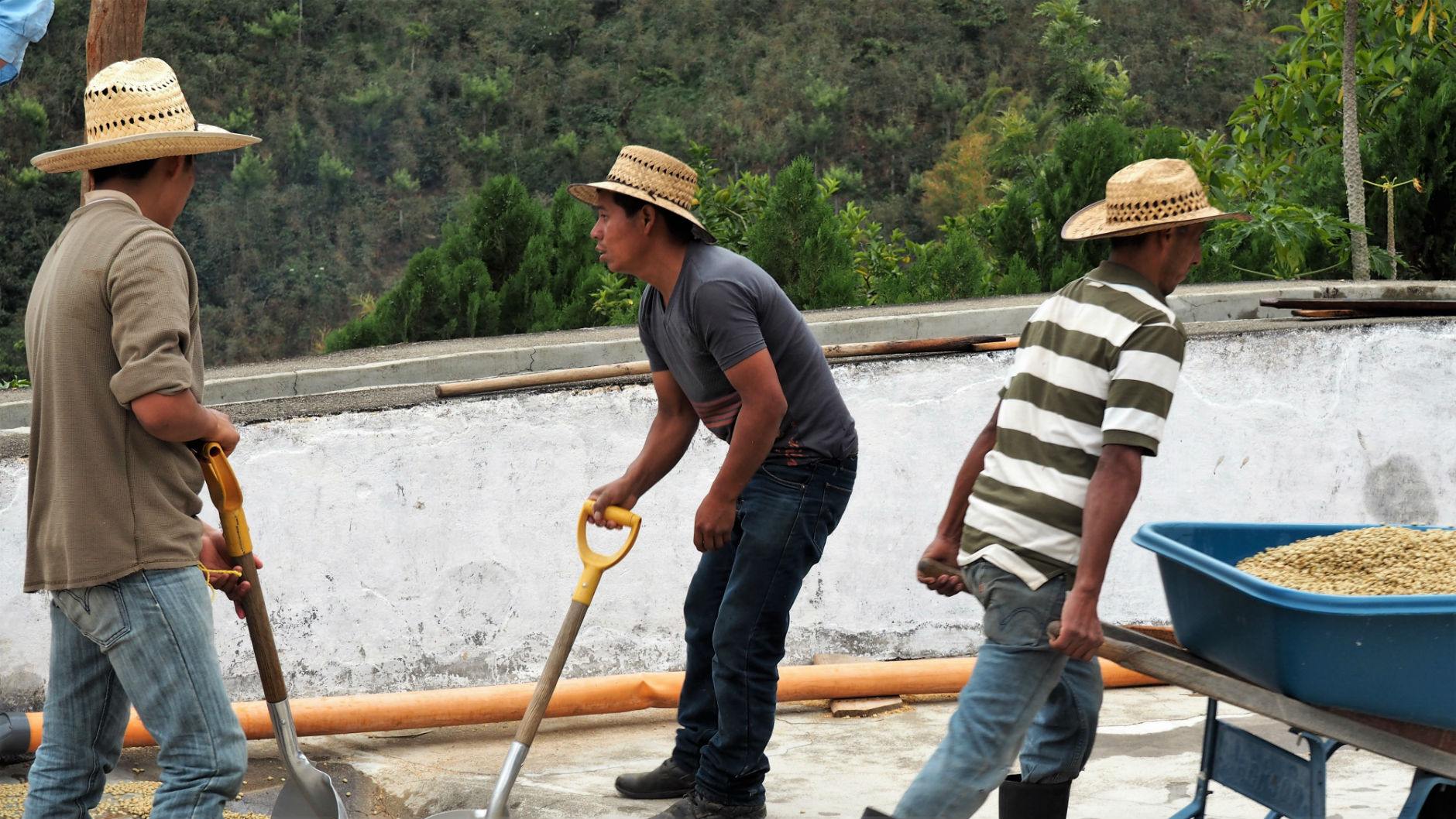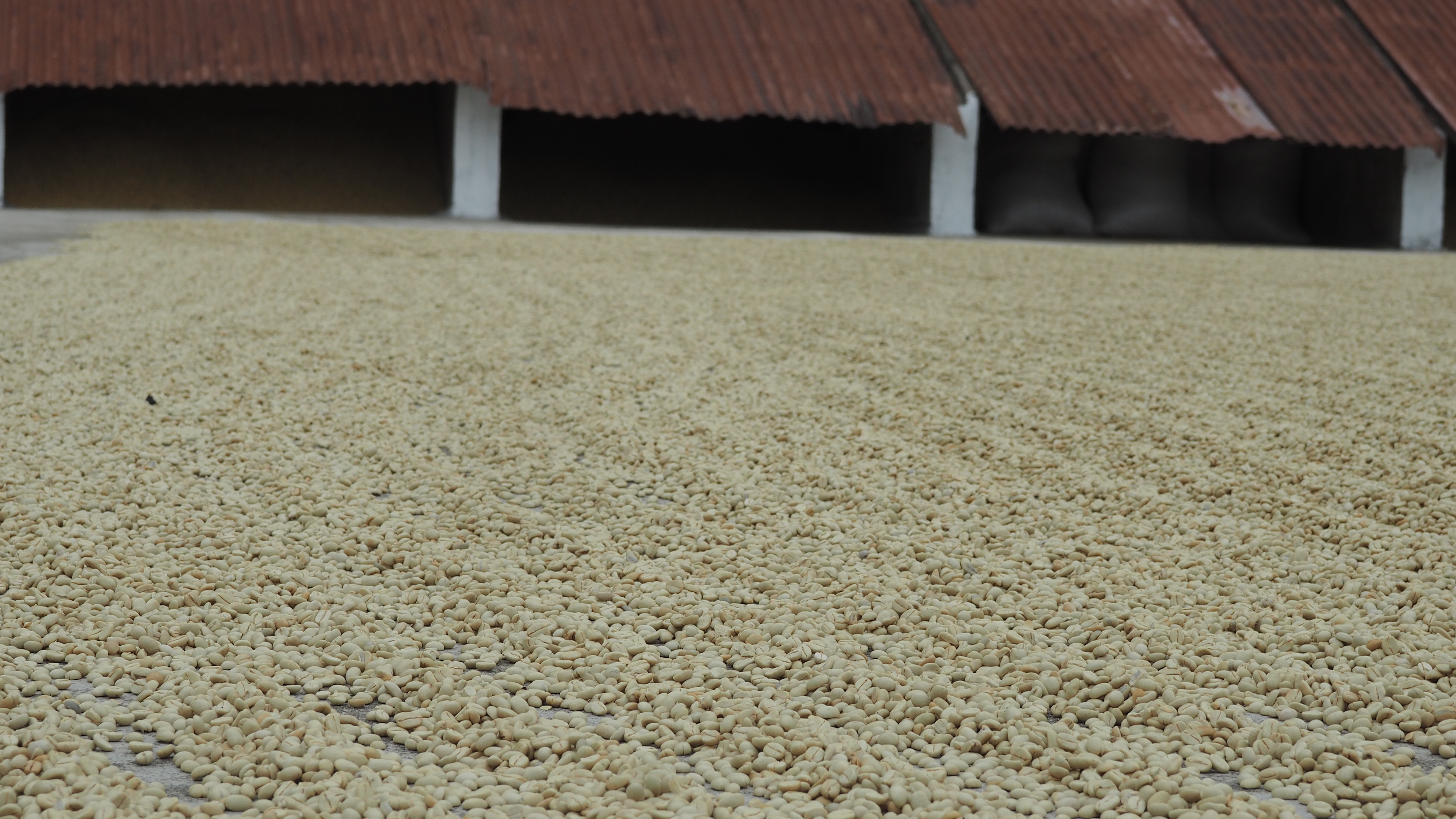Guatemala San Pedro Necta Hugo Chávez Fully Washed Crown Jewel
Boxes 0
Warehouses Oakland
Out of stock
Intro
Located within the municipality of San Pedro Necta in western Huehuetenango, Hugo Chávez Mendez is growing coffee on his family’s farm. Don Hugo is the third generation of farmer, working the land his grandfather, José Olivia Chávez founded in the 1940s, called Finca El Limonar.
Don Hugo is blessed with excellent conditions for coffee farming, including an abundance of fresh spring water available for both hydro-powered processing equipment, drinking, and washing coffee. His farm is certified by the Rainforest Alliance, which means, among other things, at least 25% of the land is natural or replanted forest, and water use is monitored closely. Wastewater management especially is a critical point for the RFA certification.
Huehuetenango is one of Anacafe’s 8 designated coffee origins, and is lauded for its high elevations, later harvest periods, and cooler temperatures. The region itself is just across the border from Chiapas, Mexico, and is quite remote compared to the more accessible Guatemalan regions like Acatenango and Antigua.
Coffee from Finca Limonar has consistently dazzled us on the cupping table, both as preship, arrival, and analysis roasts. Glisteningly clean and marked by subtle floral notes layered on sweet citrus flavors, the lot is an exceptional example of the best of the region. We’re pleased to offer this lot as both full sized 69kg bags and 10kg Crown Jewels for a limited time.
Green
Coffee from Finca El Limonar check all the right boxes for a nicely processed Huehuetenango. High density, low moisture, moderate water activity, and slightly above average screen size make this an easy green coffee to appreciate. Roast with confidence!
Don Hugo’s variety selections are classic American cultivars. Limonar was originally planted with heirloom Bourbon, a selection that mutated from Typica brough by the French in the 18th century on the Indian Ocean island (once Bourbon, now Ile Réunion) off the eastern coast of Madagascar. Starting around the middle of the 19th century, Bourbon made its way to the Americas and by the mid 20th century had largely replaced Typica in places like Brazil and Central America. It was attractive at the time mostly due to its slightly higher yields. While Typica can be recognized by its conical tree skirt and long leaves and berries, Bourbon is rounder in all aspects.
Since Limonar was founded, Caturra and Mundo Novo have also been introduced. Mundo Novo is, as you might surmise, among the Western Hemisphere’s first original genetic contributions to Arabica in the form of a naturally occurring Bourbon-Typica hybrid first observed in Brazil in the 1940s. Caturra is one of many short-stature mutations observed in Bourbon, the result of a single gene modification. Caturra is an old classic, first described in 1937 (also in Brazil) and it is well-loved by coffee growers. It retains the excellent flavors of its genetic antecedent, but can be planted more densely resulting in higher average yields per hectare of tree. Its short stature makes it easier to pick and prune as well.
Taste
Ikawa
Firing up the Ikawa this week, I used a compare/contrast of two profiles: one Jen has been using to great success, another I’ve been using with mixed results. You can download them both and try them yourself, if you like: Jen’s Profile involves a smooth slope and soft landing in first crack, ending at 5:15 and 405F. Chris’s Profile starts with a lower charge temp and more dramatic fan speeds, races through Maillard and counteracts high end temperature of 425F with very high fan speed.
I had high hopes for my airflow profile on this dense Huehue, I feel like it usually produces its best results with floral, dense coffees like washed Yirgacheffes and Nariños. On this Huehue, it showcased some bright lemon, soft pear, and mild floral notes – a nice roast. Jen’s profile, however, really knocked my socks of with brilliant stone fruit flavors that layered complexity on top of the already juicy, floral cup.
Probatino
I kept Jen’s Ikawa profile up on my phone as I roasted the first batch of Limonar in our Probatino, hoping to translate it faithfully to a larger drum batch. The result was a close mimic of the curve, but a longer than average roast for our little race car roaster. It was silky-smooth and tasted like chocolate cake, lavender, and almond, but muted the coveted citrus and stone fruit notes that were so prevalent in the sample roasts.
Attempting a second batch, I made one gas adjustment prior to the beginning of Maillard reactions, and a second increase a little less than a minute after I noted color change, without backing down again. The brisk 7:25 roast ended with a lighter color after just 65 seconds of post-crack development. The cup was applauded for its sweetness and tangy cherry notes which were augmented by hints of melon, chamomile, and dried peach. Maybe my most successful Probatino attempt this week.
Behmor
Unless otherwise noted, I follow a set standard of operations for all my Behmor roasts. Generally, I’ll use the 1lb setting, manual mode (P5), full power, and high drum speed until crack. Read my original post and stats here.
True to what Chris noted above, this coffee was slower to develop in the roaster. I attempted to ease into first crack by engaging P4 immediately before hearing the first true pops of this solid coffee. This coffee was a dream to roast, and rolled consistently and thoroughly through first crack.
My development on this coffee was rather low (12.1%), but plenty of sugars still came through alongside the elegant acids. Sometimes my coworkers tease me as ‘the guy who doesn’t like clean, washed Central American coffees’ but this coffee was (as the kids say these days) my jam in whatever form it was served to me. I couldn’t stop drinking this! In fact, I am drinking a cup of this coffee while I write this blurb..
Your roast of this coffee in the Behmor should be simple and intuitive. I didn’t experience any curveballs with this coffee, and it has plenty of dimension to offer. Enjoy thoroughly, and repeatedly!
Brew
Based on its performance on the cupping table, it was clear that this coffee didn’t need much help to produce a delicious brew. Hugo’s coffee had great structure and clean sweetness, and didn’t take much effort to dial in.
The Chemex is my preferred method for showcasing what a coffee has to offer; the thick filter and long draining time can make it a little tricky if the coffee is finicky or quick to over extract, but when executed well it can create an incredibly clean and elegant cup. I stuck to this brew method across all roasts because it worked so well, and has the added bonus of brewing a larger volume (my cuppers were very anxious to keep drinking this coffee). Brewed at a longer extraction, 1:17, the prevalent sugar browning notes began to give way to delicate honey and marzipan, but the body was a little thin. After shortening the brew to a 1:15 ratio, we became overwhelmed by flavors of nutella, nougat, and vanilla balanced by orange, cherry, pralines, clove, and dried fruit. In fact, my panel enjoyed this coffee so much that one of the tasting notes was “HOLY COW”.
I highly suggest brewing and (more importantly) drinking this coffee. We’ve been enjoying it in the mornings most days since analysis ended and it has yet to disappoint.





